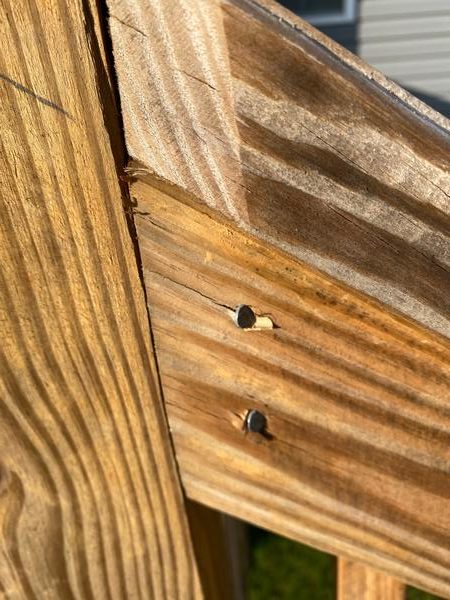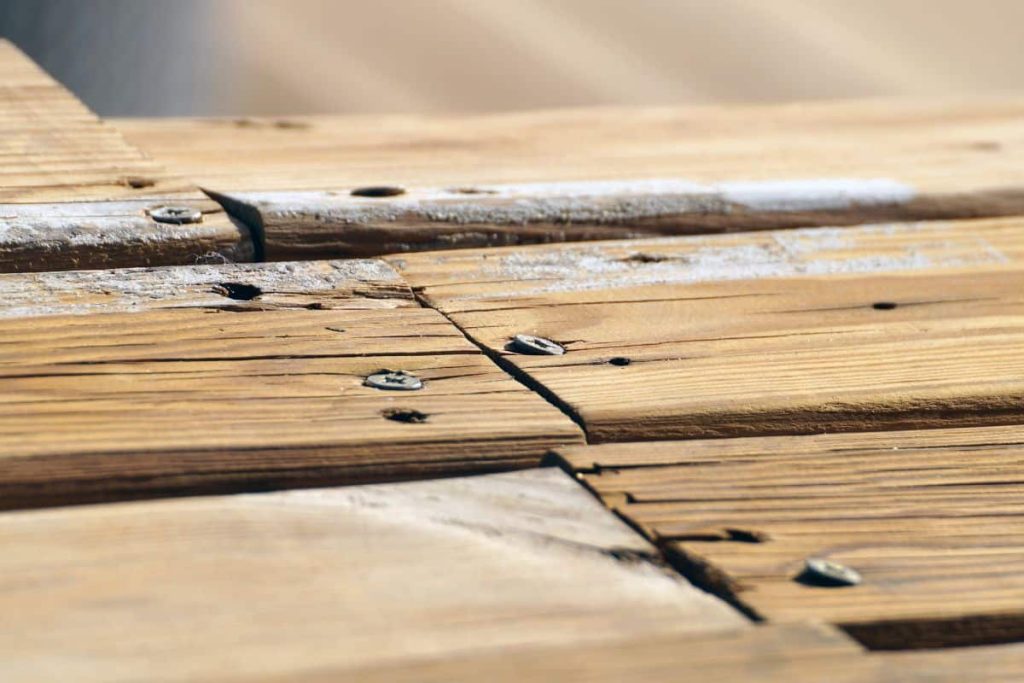

Nails popping up on your patio deck can be a frustrating issue, signalling potential structural problems and compromising the overall aesthetic of your outdoor living space. This article delves into the various causes and explores safe methods for reinforcement, providing actionable solutions that homeowners can implement themselves. We’ll cover everything from identifying the root cause of the popping nails to practical reinforcement techniques. The article will guide you through each step with detailed explanations and actionable advice, helping you understand which approach is best for your specific situation. This guide will outline the key aspects of diagnosing the issue, identifying potential causes like moisture damage or wood rot, and then demonstrate various reinforcement strategies to ensure your deck remains sound and visually appealing.
Identifying the Root Cause of Popping Nails
Understanding the Underlying Factors
Popping nails on your patio deck often signify a deeper structural issue. The nail popping out isn’t the primary problem; it’s a symptom. Several factors contribute to this problem, including moisture damage, wood rot, settling foundation issues, or improperly installed nails in the first place. Thorough inspection is essential to determine the actual cause. If you’ve recently had heavy rains or consistent moisture in the area, wood rot may be a concern. Similarly, changes in the foundation of your home, especially if the area has experienced subsidence, can cause the deck to shift, leading to popping nails. The issue might also be related to the quality or type of wood used for the deck, or a poorly planned structural support system.
Visual Inspection and Diagnostic Tools
Related Post : Deck Boards Splintering Over Time? How to Restore a Smooth Surface
Conduct a visual inspection of the affected area. Look for signs of moisture damage, such as warped boards, mold, or discoloration. Using a moisture meter can help pinpoint areas where the wood has absorbed excessive moisture. Examine the substructure for signs of settling or structural damage. If you notice signs of rot, it’s crucial to seek professional assistance. Professional inspection from a home inspector or a certified deck specialist can provide a comprehensive assessment and recommend the appropriate course of action.
Safe Methods for Nail Reinforcement
Strengthening Existing Nails
If the issue is minor and limited to a few nails, you can try strengthening them using appropriate materials. For instance, you could drill a pilot hole slightly larger than the nail head to secure it more effectively. Add a small amount of wood glue or a specialized deck sealant to the joint before driving the nail in. Use a nail set to drive the nail head flush with the surface, which helps prevent future popping and enhances the aesthetic appeal.
Replacing Damaged Nails
If the issue isn’t easily fixable with minor adjustments, the next step is to replace the damaged nails. This process should only be attempted after you have thoroughly inspected the affected area to rule out underlying structural problems. Use nails specifically designed for exterior use, such as galvanized nails, to increase their durability and resistance to moisture.
Installing Metal Anchors
In some cases, especially if the deck boards are considerably unstable, using metal anchors can provide a more robust solution. These anchors offer superior holding power and durability. Ensure proper preparation of the wood surface before installing the anchors to maximize their effectiveness. Follow manufacturer instructions carefully for optimal results.
Preventing Future Problems
Regular Deck Maintenance
Regular maintenance is critical to preventing future nail popping issues. Routine inspection for signs of moisture damage or structural problems will help catch these issues early. Promptly address any signs of rot or warping. Ensure adequate drainage around the deck to prevent moisture from accumulating underneath. Using sealant on the underside of the deck can significantly help. Apply a sealant to the underside to prevent moisture from penetrating. A deck sealant can protect the wood from water damage.
Improving Structural Support
Strengthening the structural support of the deck is essential in preventing the nails from popping up. This might require adding additional support beams or reinforcing existing ones. If you notice excessive movement in the deck, consult a professional for an assessment and recommendations for structural enhancements.
Choosing Proper Materials
Using high-quality materials is key to preventing future problems. Select lumber that’s resistant to rot and moisture. Ensure that the nails you use are appropriately sized and galvanized for outdoor use, ensuring they can withstand the elements.
Professional Inspection and Consultation
Recognizing When to Seek Expertise
If the popping nails are extensive, affect multiple areas, or you notice significant signs of damage, contacting a professional deck specialist or a home inspector is essential. A professional can provide a thorough assessment of the entire deck structure, identifying underlying issues and recommending the most suitable solutions. Professional advice and expertise is beneficial when dealing with complicated or large-scale structural problems.
Evaluating the Severity of the Problem
Professional inspection allows you to determine the extent of the problem and the need for more extensive repairs. This is especially crucial when dealing with underlying structural damage. Ignoring visible signs can lead to more significant problems and higher repair costs in the future.
Additional Tips and Considerations
Addressing Moisture Issues
If moisture is the main culprit, addressing the source is crucial. Ensure proper drainage around the deck and consider adding gutters or downspouts to redirect water away from the structure. Inspecting and fixing leaks in nearby pipes or roofs, which can introduce moisture into the surrounding environment, is also crucial.
Regularly Checking for Rot
Regular inspection for signs of rot or decay, particularly in wooden decks, is crucial. Early detection allows for immediate attention to damaged areas, preventing further spread and structural instability. Use a moisture meter to assess the moisture content of the wood in potentially problematic areas.
Considering Alternative Materials
In severe cases, consider alternative materials like composite decking or pressure-treated lumber for your deck, which are more resistant to moisture damage and rot. Composite materials offer an attractive alternative, but they come with a higher upfront cost.
In conclusion, reinforcing nails popping up on your patio deck is crucial for maintaining its structural integrity and aesthetic appeal. By understanding the potential causes and employing the appropriate solutions, you can prevent further damage and extend the lifespan of your outdoor space. This article detailed safe methods for reinforcement, providing practical guidance and actionable steps. Consider consulting with a professional if the problem is extensive or if you lack the necessary skills or experience. Ready to tackle your patio deck issues? Visit [website address] for more DIY tips and resources!